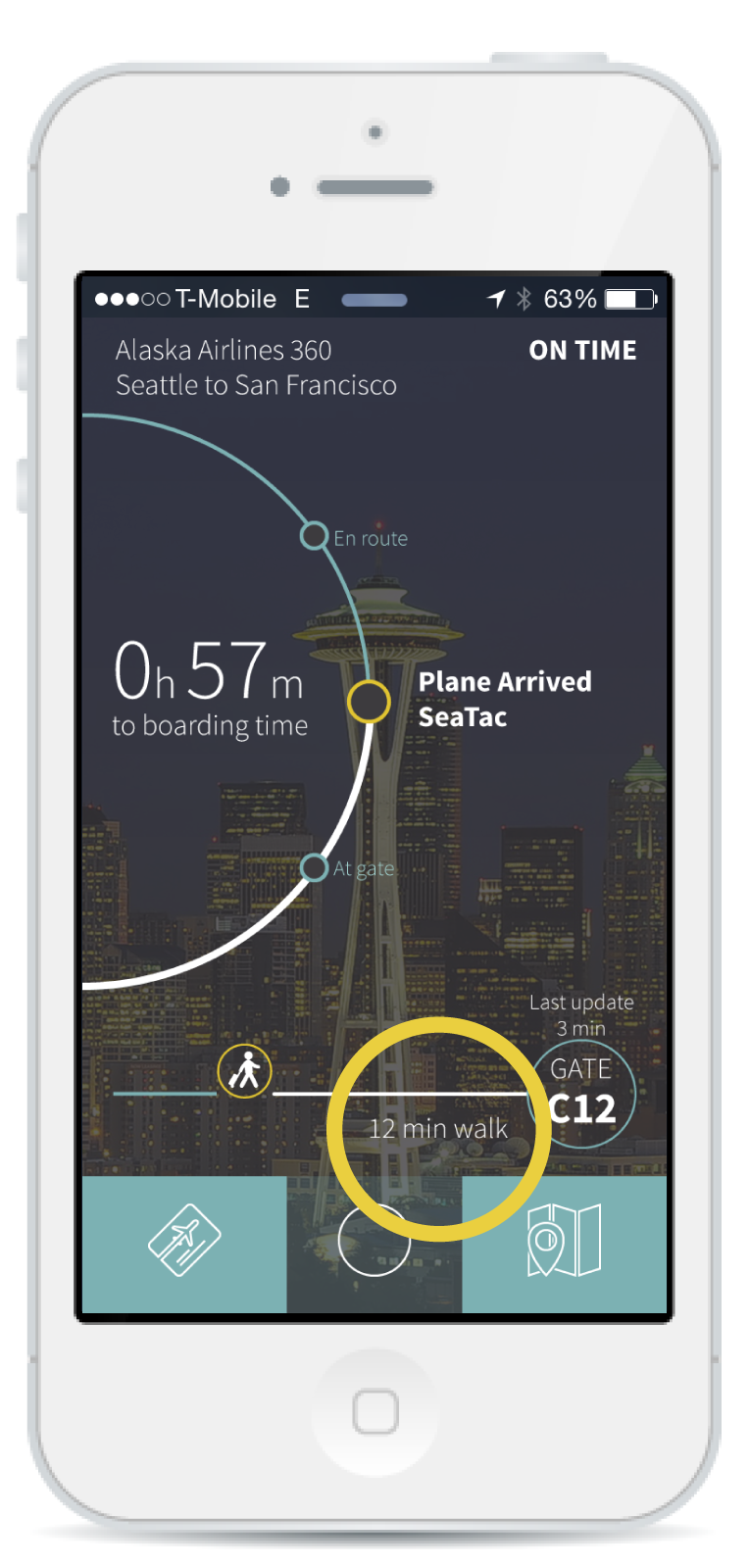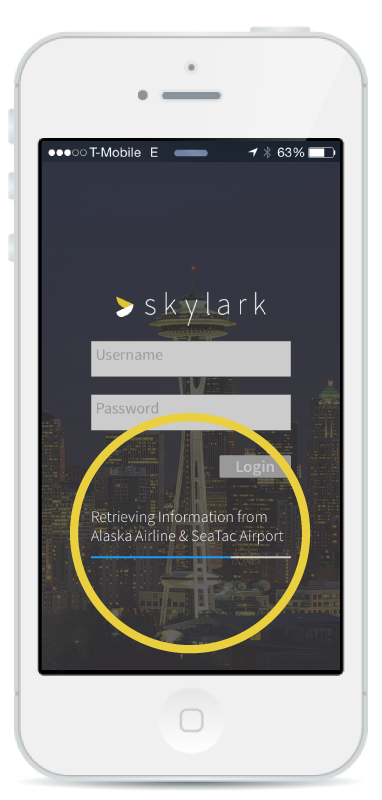
4 Months Capstone Project. Sponsored by TEAGUE, August, 2014
Alex Chang, Michael Grazewski, Irene Ma, Chase Chenhung Wu. Special Thanks to Cameron Campbell
User Research, Concept Evaluation, UX/UI Design, Storyboard, Video Production
Consider about the imagery above, there was anxiety, fustration, confusion, stress. These are all emotions that people feel at the airport. And a primary reson for this is because people feel tethered to the gate.
In our initial primary research, we found that passengers prioritize getting to the gate above other needs. They may not venture to find a much-needed aspirin. They may not feel comfortable hanging out at the kids play area at the other end of the terminal. We identified these behavior as tethering to the gate.
Passengers are tethered to the gate for the following resons:

Especially in unfamiliar airports, passengers want to go straight to the gate because they need to know where it is, to prevent the risk of geting lost and missing a flight.
At the gate, passengers can interpret presented information, such as whether your flight is delayed or on time. You can see whether the plane is at the gate, or hear when they start announcing the boarding process.
Passengers go to the gate to request seat upgrades or changes and to put in a standby request, and often need to be at the gate to seek advice from the gate agents.
We strongly believe that a visit to the airport doesn't have to be this way and that air travel can be an enjoyable and worry-free experience. Passengers can be physically and mentally Untethered from their gates.
Skylark is a system that delivers contextual, personalized information to passengers as they move through the airport. It integrates data from disparate sources that passengers need. It then pushes vital notifications to ensure passengers make their flights on time, enables direct communication with gate agents, and provides information that helps people decide what to do with their time in the airport.

Skylark gathers data from different information sources. This includes flight updates from airline systems, gate activities, indoor maps, directories from airport systems, and individual location data using bluetooth beacons
Skylark communicates with a smartphone application. There is future potential to deploy Skylark on other platforms, including wearables and in-environment displays. Each has unique properties which would complement the system’s ability to deliver contextual, personalized data in dynamic, often chaotic airport environments.
The Skylark application presents information to passengers in a thoughtful, deliberate way. Evaluations of early concepts and prototypes revealed four key principles for a successful system.


Design for personalized approaches to time so that time-related information is useful, not stress-inducing.
Passengers can choose from different information provided on the main screen including remaining time until boarding, walk time to gate, and flight status to make timely decisions for their airport journey.


Empower passengers to step away from the gate by providing services they typically rely on the gate for.
Skylark enables direct communication with gate agents. Passengers can chat directly with gate agents to request and confirm seat changes, upgrades and standby requests.


Inspire confidence, so passengers trust the information presented to make different decisions.
Skylark enables direct communication with gate agents. Passengers can chat directly with gate agents to request and confirm seat changes,upgrades and standby requests.


Focus on presenting information that is contextual, taking into account location, situation an environment.
Passengers receive only the most relevant notifications. For example, if passengers wander too far from the gate around their boarding time, they receive a notification to head back. The map view allow passengers to see points of interest by walking time radius.
Our research shows that passengers are not the only ones impacted by the phenomenon of tethering to the gate. Airlines and airports, both key stakeholders in air travel, are aff ected as well.

Airlines care about tethering at the gate because they want to improve the customer experience.
Airlines have a very narrow profit margin of 1.8% ( $5.94 per passenger) as a result of regulatory restrictions and fluctuating fuel costs, according to the International Air Transport Association. This means that competition is fierce among airlines, and one way airlines set themselves apart is through improved customer experience.
Tethering at the gate also means that more people are concentrated around their gates, leading to crowding. This impacts on-time departures, and leads to overwhelmed, overworked gate agents.

Airports care about tethering at the gate because they want to grow revenues that are not dependent on the airlines.
According to Airports Council International, 70% of airports are not focusing on non-aviation revenue as a way to cope with the volatility of the airlines business cycle. Two ways that airports grow revenues is by increasing airport capacity to process more passengers, and encouraging spending in shops and restaurants in the airport. According to an interview with a Port of Seattle representative, solving the problem of crowding at the gate is a huge value for airports because it increases capacity and eff iciency of the airport.
We talked to a lot of people about their airport experiences. We did observations, and conducted a diary study. We even re-created an airport environment here on campus, and had participants play a game in which they had to complete as many tasks as they could while making their flights on time. These activities revealed a lot about people's behaviors and needs related to the gate.

Our diary study of participants' journeys through the airport uncovered a pattern of mental and physical tethering to the gate.

Evaluations of early concepts surfaced the importance of establishing confidence in the system, and designing for personalized approaches to time.

Our ideation and evaluation process confirmed that passengers seek the information Skylark is designed to provide: flight status, walking times, time until boarding, airport directories, and dynamic maps.
Copyright © 2014 Shiya Liang. All Rights Reserved.